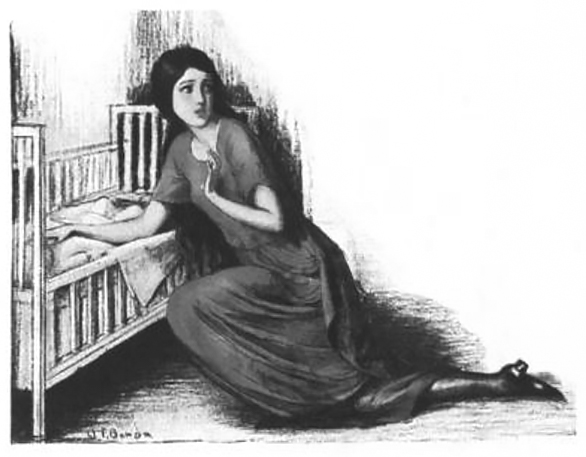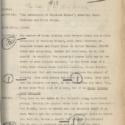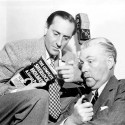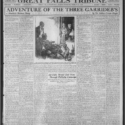A Scion Society of The Baker Street Irregulars

The 17 Steps: The Sussex Vampire
Seventeen thoughts for further ponderance of the case at hand – The Sussex Vampire (SUSS)

MORRISON, MORRISON, AND SUSPICIOUS
E.J.C. writes, “As our firm specializes entirely upon the assessment of machinery the matter hardly comes within our purview, and we have therefore recommended Mr. Ferguson to call upon you and lay the matter before you. We have not forgotten your successful action in the case of Matilda Briggs.
Why would tea broker Robert Ferguson seek advce from machine assessors about vampires? Why would machine assessors need help with a ship and a giant rat? Is there as much more to these “machine assessors” as there was to a certain “government clerk” named Mycroft? What might that “much more” have been?
WHAT STORIES DID HOLMES’S NANNY TELL HIM?
“Anything is better than stagnation,” Sherlock Holmes says, “but really we seem to have been switched on to a Grimms’ fairy tale.”
I don’t seem to recall hearing of a Grimm’s fairy tale with vampires in it . . . does anyone else know of one? What tale might he have been referring to? As a child, was Holmes exposed to the older, more violent versions of the tales, or had they been cleaned up a bit even then?
OKAY, IT’S NOT ALPHABETICAL ORDER …
In Holmes’s index we find:
1. “Voyage of the Gloria Scott”
2. Victor Lynch
3. Venomous lizard
4. Vittoria
5. Vanderbilt
5. Vipers
6. Vigor
7. Vampirism in Hungary
8. Vampires in Transylvania
Can we deduce anything from this sequence? The first five seem to be in reverse alphabetical order, after which it becomes a little messy. Could we safely say it’s chronological? Or even state which were cases and which were clippings?
THE 221B DEPARTMENT OF POSIONOUS REPTILES
“Venomous lizard or gila,” Holmes reads, then remarks, “Remarkable case, that!”
Is it a coincidence that Holmes ran into someone who used a gila monster for a crime as well as someone who used a “swamp adder” for a crime? Could a gila monster climb a bell rope? Could it kill a young lady in her sleep? (Watson couldn’t, of course, title the story after the true dying gasp, “A … striped … sausage …”)
RUBBISH, WATSON, RUBBISH!
“What have we to do with walking corpses who can only be held in their grave by stakes driven through their hearts? It’s pure lunacy.”
Methinks the detective doth protest too much. Does he say the idea of vampires is lunacy, or that the idea that he and Watson should have anything to do with them is lunacy? If vampires themselves are such lunacy, why keep a write-up of them in his great index?
WATSON, THE VOICE OF REASON
“But surely,” the good doctor asserts, “the vampire was not necessarily a dead man? A living person might have the habit.”
The letter only has the word “vampire” in it. Why is Holmes assuming every legendary aspect is implied in its use? Even when Watson makes his point and Holmes agrees, the detective still refuses to consider a blood-drinking mental disorder in his tirade. Why is Holmes so set on theorizing before the facts?
HOUSE ARREST BY A TEA BROKER
Robert Ferguson writes, of his wife, “She is now confined to her room.”
Could a husband keep his wife prisoner at his whim? Later we read: “Then she rushed to her room and locked herself in,” which seems to be the real story. Why was Ferguson attempting the impression of control?
THE EFFECTS OF AN OLD WOUND
“A spaniel had lain in a basket in the corner. It came slowly forward towards its master, walking with difficulty. Its hind legs moved irregularly and its tail was on the ground.”
When asked how long the dog has been like this, Ferguson replies, “It may have been four months ago.” Is the dog is still paralyzed from a dose of curare four months old? Are the effects of the posion that long-lasting?
CALLING DOCTOR L-O-V-E
In this story we get one of the few accounts of Watson’s bedside manner alone with a patient. He just can’t seem to get over how beautiful his patient is, a condition that seems to take precedence over any medical diagnosis. Was this a fatal flaw in the doctor’s medical practice?
AND DID THE COUNTRY KNOW HIM, AS WELL?
Watson: “lt is in Sussex, South of Horsham.”
Holmes: “Not very far, eh? And Cheeseman’s?”
Watson: “I know that country, Holmes. It is full of old houses which are named after the men who built them centuries ago.”
While Sherlock Holmes is the member of the duo we most associate with Sussex, Watson seems to have spent a little time there himself apart from his friend, enough to “know” the country. Can we speculate as to how Watson came to know that part of Sussex?
Does his “familiar, but not too familiar” tone and reference to the houses above all else indicate time spent there post-childhood?
MORE MULTI-PURPOSE BUSINESS?
“This gentleman married some five years ago a Peruvian lady the daughter of a Peruvian merchant, whom he had met in connection with the importation of nitrates.”
“This gentleman,” we later learn, is tea-broker Robert Ferguson. What is the connection between nitrates and tea, if any? Since Peru’s nitrate supplies basically came from 2000 years of accumulated bird droppings (from cormorants, no less), one would hope not! So why was Ferguson there?
NIGEL BRUCE STOPS IN AT BAKER STREET
“Of course I remembered him,” Nigel Bruce says of Ferguson. “It’s like him to be so concerned over a friend’s case.”
Basil Rathbone shakes his head at this, and says, “I never get your limits, Watson. There are unexplored possibilities about you. Take a wire down, like a good fellow. ‘Will examine your case with pleasure.’ ”
“Your case!” Nigel Bruce sputters.
“We must not let him think that this agency is a home for the weak-minded. Of course it is his case.”
If ever there was justification for the Nigel Bruce portrayal of Watson, this scene in “Sussex Vampire” is it. Holmes gives him the back-handed compliment that the Bruce-ian Watson will never pick up the full implication of, then patronizingly gives Watson secretarial duty. Holmes then follows with the weak-minded jibe, straight at his friend. Is Holmes really saying that there seems to be no limit to Watson’s foolishness? Should Watson have picked up on the old “I have a friend who” ruse?
THE BOY BECOMES A MAN
“Hullo, Watson,” Big Bob Ferguson says. “You don’t look quite the man you did when I threw you over the ropes into the crowd at the Old Deer Park.”
How old would we expect Watson to have been during his rugby career? Was he of an age when he could truly be called a man and not a boy? At what age might the change in label have occurred in those days?
THE STAR OF THE BLACKHEATH BOILERSTOKERS
“I believe your friend Watson played Rugby for Blackheath when I was three-quarter for Richmond.”
What does this statement tell us about friend Watson’s past? Would he have had to live in Blackheath to be on the team?
THE STUNTING OF JACK FERGUSON
“And yet the kiddies have got to be protected,” Bob Fergusons states, and later commands, “Run away, little Jacky.”
One of the most remarkable things about this story is Ferguson’s treatment of his fifteen-year-old son, calling him a “kiddie” and “little Jacky.” While Holmes respectfully refers to the teenager as Jack, and the baby as “little man,” Papa Ferguson seems intent on preventing his elder son from growing up. Treated forever like a child, Jack Ferguson responds in kind. Why would Big Bob do this to his son? Is it due to his first wife’s death or Jack’s crippling injury?
FERGUSON’S GUIDE TO TRAINS
“There is an excellent train at two from Victoria if you could come,” says Big Bob.
It’s a silly question, but I have to ask it … was the train rated “excellent” just due to its departure time, or were there actually better quality trains the choosy traveller could be on the lookout for?
FEARFUL FRIEND DELORES
“She verra ill. She need doctor. I frightened stay alone with her without doctor,” says Delores, the Peruvian personal assistant.
Why is Delores so frightened to stay alone with someone to whom she is more friend than servant? Did she feel responsible for Mrs. Ferguson, or was she actually afraid of her?
THE ONE-SIDED TALE OF THE HUSBAND
“The lady was very beautiful, but the fact of her foreign birth and of her alien religion always caused a separation of interests and of feelings between husband and wife, so that after a time his love may have cooled towards her and he may have come to regard their union as a mistake. He felt there were sides of her character which he could never explore or understand.”
When we finally encounter Mrs. Ferguson at the tale’s end, she speaks perfect English and is completely rational. Everyone in the household seems to know what is going on, except Big Bob. Is Holmes’s “leave everything to sort itself out” actually going to be a happy ending for this household? Or are Big Bob’s weird prejudices, his peculiar relationship with his teenage son, and his communication gaps with the rest of the household going to continue once Holmes and Watson are gone? Might Ferguson have ignored Holmes’s advice for his spoiled teenager, and kept the boy in Sussex, to the eventual despair of everyone? Does solving the blood-sucking mystery truly resolve the effects of “foreign birth and alien religion,” the cooling of Ferguson’s love, and Big Bob’s notions that the union was a mistake?
The Seventeen Steps originally appeared on the Hounds of the Internet e-list from September 2000 to October 2001 and later on the Sherlock Peoria blog.
 Brad Keefauver, the 41st Garrideb, is the author of The Elementary Methods of Sherlock Holmes, Sherlock and the Ladies, and The Armchair Baskerville Tour. Former publisher of The Holmes & Watson Report, The Dangling Prussian, and a whole lot of obscure, collectable little things on our boy Sherlock. Keefauver is a member of the Baker Street Irregulars and the Adventuresses of Sherlock Holmes.
Brad Keefauver, the 41st Garrideb, is the author of The Elementary Methods of Sherlock Holmes, Sherlock and the Ladies, and The Armchair Baskerville Tour. Former publisher of The Holmes & Watson Report, The Dangling Prussian, and a whole lot of obscure, collectable little things on our boy Sherlock. Keefauver is a member of the Baker Street Irregulars and the Adventuresses of Sherlock Holmes.






